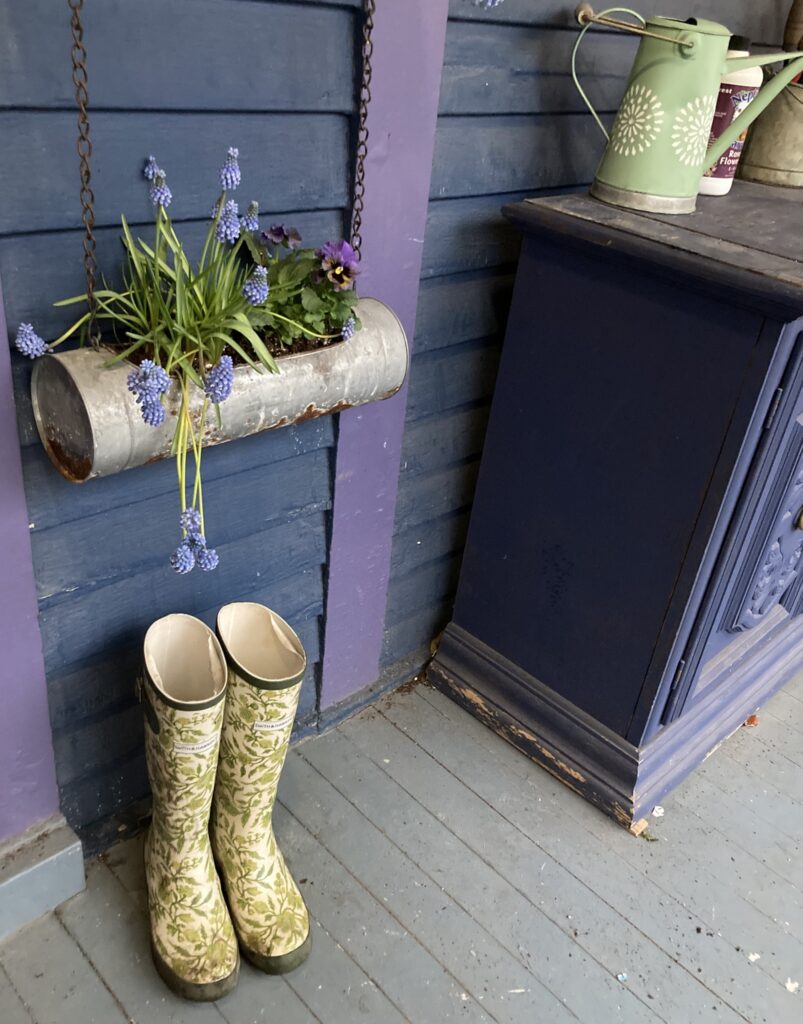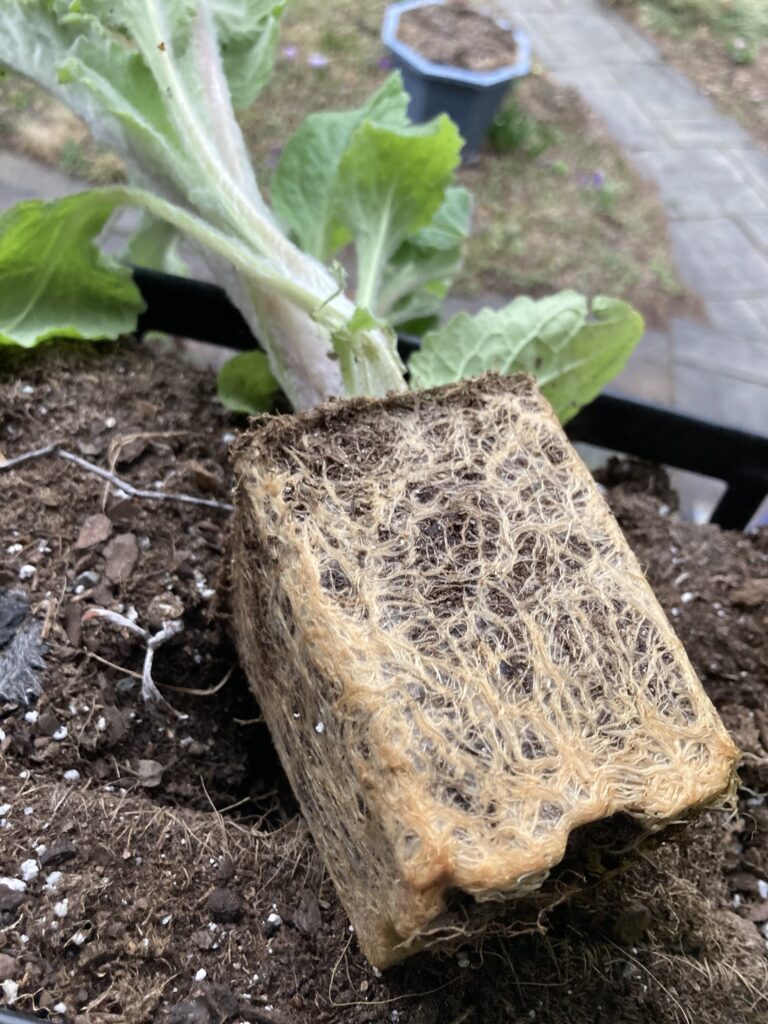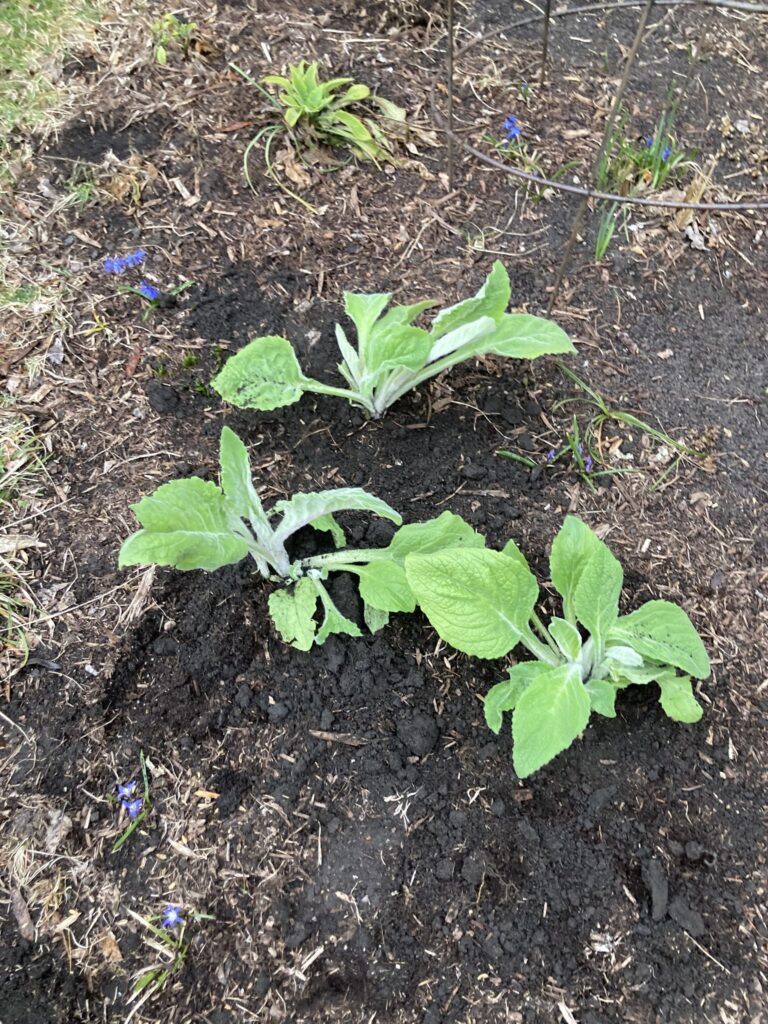When you buy plants at a nursery, you can lift them out of the pot a little bit, to check and make sure they’re not too root-bound. But if you buy online, you can’t check in advance, and even reputable growers may occasionally send you root-bound plants.
If you look closely at the last photo, you’ll see that the three new foxglove (“Silver Fox”) are quite a bit bigger than the one at top left, that’s emerging from the ground, so it’s not so surprising that it arrived root-bound.
What I do in that situation is cut a cross in the base of the roots, loosening them a little with my fingers, and encouraging them to spread out a little when I plant them. With luck, that should help them along as they try to establish themselves in the ground. Remember to water new plantings regularly for a few weeks, until they’re settled in. Foxglove in particular like the soil moist, so try not to let them dry out.
Foxglove are biennial, so if you plant one, it won’t come back next year — it’ll drop seed, to come back the year after. But if you plant them every year for a few years, and let the last flowers of the season dry on the stalk and drop seeds, you should be able to get a nice established colony — that’s my hope, anyway.
It took me a while to find a spot where foxglove were happy in my garden; this is the first year I’ve had any come back! I tried them in full shade; I tried them in full sun — no luck. They’re growing in part-shade now, at the edge of a redbud’s tree cover. Fingers crossed they stay happy…
If you are patient, you can grow foxgloves from seeds — just remember that it’ll take a few years before you see flowers.
IMPORTANT: Foxglove is poisonous (it’s grown commercially for use in making digitalis, heart medicine) — though they’re popular and common cottage garden plants, they’re usually planted towards the back of a bed, where children and pets aren’t likely to reach them. All parts can be toxic when consumed.
Deer and rabbits generally leave them alone; hummingbirds are attracted by their nectar.




